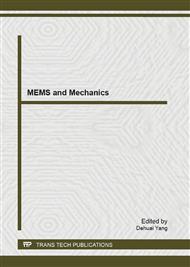p.493
p.499
p.504
p.509
p.516
p.523
p.528
p.534
p.540
Analysis and Computation of Taper Leaf Spring Based on FE Contact Analysis
Abstract:
The traditional analysis of the leaf spring just implemented a simplified mechanical model without considering the friction between the leaf springs. In order to do better in designing the leaf spring with variable cross sections, this paper firstly constructed the parameterized model of the taper leaf spring, and then applied the contact theory to add contact element to simulate the friction between the leaf springs in the FE analysis. After these steps, the assembly of the prestressed, the stiffness, the damping ratio and the fatigue life of the leaf spring could be achieved. It shows that the analysis and computation of taper leaf spring based on FE contact analysis can reflect the actual situation more comprehensively after comparing the results with those calculated with traditional way and those recommended by industry .
Info:
Periodical:
Pages:
516-522
Citation:
Online since:
June 2013
Authors:
Price:
Сopyright:
© 2013 Trans Tech Publications Ltd. All Rights Reserved
Share:
Citation:


